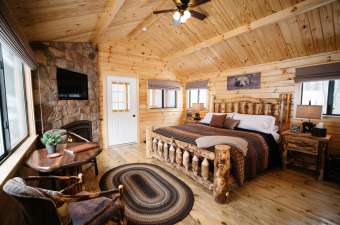Frank Lloyd Wright's masterpiece Fallingwater has long been a treasured asset of this region and a must-see destination for visitors. But it is not Wright's only regional showplace.
Located near Chalk Hill on Route 40 east of Uniontown, Kentuck Knob was constructed in the late 1950s for the I. N. Hagan family.
The Hagan family, of Uniontown, were close friends of department store magnate Edgar Kaufmann and family and frequently visited them at Fallingwater. Through the Kaufmanns they were able to interest Wright in designing a deluxe Usonian house for them on 80 acres overlooking the Conemaugh Gorge.
Despite being heavily involved in designing the Guggenheim Museum, the 86-year-old architect accepted the commission and produced another remarkable design.
Wright coined the term Usonian — which means “relating to the United States” — to describe a concept of simple affordable homes constructed of local materials and being an integral part of their surroundings. His goal in 1936 was to design a house with a floor plan of 1,200 square feet that could be built for $6,000. Twenty years later the Hagans' deluxe version cost $96,000 and provided 2,300 square feet of floor space.
The Hagans lived at Kentuck Knob for 30 years before selling it in 1986 to Lord Peter Palumbo of England.
The Hagans originally wanted their house to be located on the summit of Kentuck Knob; Wright insisted on building it into the hillside. He wanted it to be “of the hill, not on the hill.” His vision was vindicated by the final result.
The house consists of two low-roofed wings, meeting at a taller hexagonal central core. The wings are not at right angles to each other; in fact our guide challenged us to find any corner in the house that was at right angles.
The walls are constructed of Pottsville sandstone, layered in such a fashion that it suggests the natural strata of the rocks in the hillside. Grantsville flagstones make up the floor, with hot water pipes below them providing radiant heating.
A wing is filled with different Wright-designed furniture, including a chair from the Imperial Hotel in Tokyo and a Mission style sofa from his famous Prairie House.
It is interesting to compare and contrast Fallingwater and Kentuck Knob and wonder how much Wright's philosophies changed in the 20 years separating their construction. The Hagans' house seems much more livable, while Fallingwater seems more like a monument.
John Oyler is a Tribune-Review contributing writer. He can be reached at 412-343-1652 or joylerpa@icloud.com.








